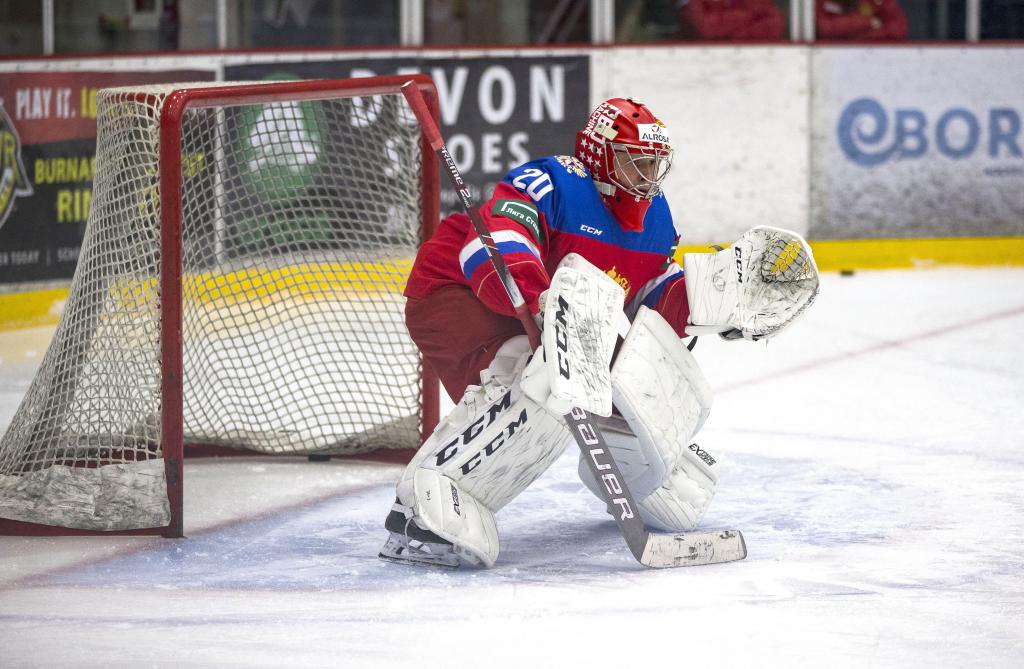Post-Draft Prospect Profiles: Samuel Fagemo No. 50 to the Los Angeles Kings

This last season wasn’t Samuel Fagemo‘s first of draft eligibility. It was, however, the 2019 NHL Entry Draft that finally saw an NHL team, the Los Angeles Kings, scoop up Fagemo as an overage prospect.
Fagemo quickly established himself as one of the premier draft reentries at the start of the 2018-19 season, scoring a hat trick for Frölunda in the CHL (Champions Hockey League). The goals kept coming for Fagemo, who was among the SuperElit’s most productive players before he’d earned a permanent spot on Frölunda’s SHL roster.
In his first SHL season, Fagemo was a consistent goal-scorer, finishing the season with 14 goals and 11 assists in 42 games. Fagemo’s 25 points represent the tenth highest mark ever for an under-19 player in the SHL, too.
While Fagemo wilted ever so slightly under the scalding hot light of the playoffs to start; he eventually found his footing, and finished with an even better point per game rate than he’d enjoyed in the regular season.
Scouting Report
Fagemo’s playstyle revolves on his ability to continuously move his feet in the offensive zone. Even so, there is room for improvement as a skater.
A good place to start would be Fagemo’s unorthodox stride; he takes quick but short strides that are neither fluid nor efficient and still generates a good burst from a standstill. It’s enough for Fagemo to win footraces in short distances and change the pace of play effectively, but his acceleration and top-end speed are limited as a result.
Samuel Fagemo gör 3-2 till Frölunda efter 9 sekunder i tredje perioden. #J18gifs #JuniorSM2018 #FHCJ18 #ModoJ18 pic.twitter.com/oDKtCKFCK3
— Anton Johansson (@antonj85) March 30, 2018
Another area of Fagemo’s skating that could use a little work would be in his balance. While he’s still quite agile overall, Fagemo often loses his balance or lowers his speed while moving laterally because his edge work isn’t refined to the extent necessary to excel. Similarly, Fagemo could be an even better puck-carrier through traffic than he already is on much the same terms.
If Fagemo can improve his technique to get more speed from each step and to better walk fine lines on his edges, it would greatly improve his ability offensively, and his overall game, too.
And while Fagemo’s game is built for the offensive zone almost exclusively, it’s the neutral zone where much of it starts. Fagemo tends to gather speed as his team transitions up ice, heading for open space and making himself available as an outlet. With the puck on his stick, Fagemo will either attempt to stickhandle through traffic or beat defencemen to the outside.
It’s why I’ve highlighted Fagemo’s skating as a part of his game that will need improvement. Right now, Fagemo has the will to attempt these outside rushes but lacks the speed to execute many of them effectively. This leaves Fagemo stuck to the perimeter in the offensive zone, where many offensive zone possessions go to die.
Wow! Great moves by Samuel Fagemo but no goal. #SHL #2019NHLDraft pic.twitter.com/zI3ZADxIoc
— Eliteprospects (@eliteprospects) November 27, 2018
If there’s one thing Fagemo does extraordinarily well in the offensive zone, it’s spotting open ice when without the puck. He has a nose for finding prime scoring chances, and his anticipation when reading the play is exceptional. He’s lethal if left unattended too close to the net.
Fagemo combines his high-end hockey sense with high-level competitiveness. Playing that close to the net means paying a heavy physical toll, and Fagemo never backs down. Even when Fagemo is suffering a size deficit against the defence, he manages to find ways to put the puck in the back of the net through sheer will and determination.
Good goal by Frölunda prospect Samuel Fagemo.https://t.co/Wwr4jPFFr5#SHL #FHC #2019NHLDraft pic.twitter.com/DkLStbmmpC
— Eliteprospects (@eliteprospects) January 5, 2019
Samuel Fagemo kvitterar för Frölunda. #2019NHLDraft pic.twitter.com/W83jbsX4oY
— Anton Johansson (@antonj85) November 20, 2018
Another part of Fagemo’s game that shouldn’t be left out is the energy he brings while playing in the offensive zone. He works hard on the forecheck and will fight like hell to gain back a lost puck, even if that means throwing himself at bigger and stronger opponents for the privilege. Between Fagemo’s good short burst speed and high energy, he’s able to apply heavy pressure on opposing defencemen and force them into subpar decisions.
These attributes also enable Fagemo to help his teammates gain more space when they have the puck in the offensive zone. He works well to open up ice, primarily by badgering defenders, often to the point that they have to give up space in order to keep play in front of them.
Good deflection in net by Frölundas prospect Samuel Fagemo.https://t.co/Wwr4jPFFr5#SHL #FHC #2019NHLDraft pic.twitter.com/w00zk63iWA
— Eliteprospects (@eliteprospects) February 14, 2019
This brings us to another very appealing part of Fagemo’s game — his finishing abilities. He is a very diverse finisher that can beat goaltenders in a variety of different ways. Left alone with the goaltender, Fagemo is able to shoot a quick wrist shot or he can fake a shot and hit the goaltender with a dangle which forces him to move sideways.
Game-winning shootout goal by Frölunda prospect Samuel Fagemo.https://t.co/Wwr4jPFFr5#SHL #2019NHLDraft pic.twitter.com/8zX5cJKjAF
— Eliteprospects (@eliteprospects) December 8, 2018
It’s that swift, powerful wrist shot, though, that is the most deadly arrow in Fagemo’s quiver. With it, he can beat goaltenders from anywhere in the offensive zone. Fagemo can pick his spot with only a little bit of time to aim. If he’s closer to the net, he’ll instead opt for a rapid-fire shot that leaves the goalie with little-to-no time to react.
By SHL standards, Fagemo’s shot is already very good. Specifically, Fagemo could learn to better react to pressure, instead of rushing a shot wide or into the stands.
Frölunda prospect Samuel Fagemo with his first goal in SHL playoffs.https://t.co/Wwr4jPFFr5#SHL #FHC #2019NHLDraft pic.twitter.com/XTIYg5JGe4
— Eliteprospects (@eliteprospects) April 14, 2019
The wrist shot is just one arrow in that aforementioned quiver, though. Fagemo has an incredible slap shot, among the best in his entire draft class. We mostly get to see when Fagemo’s teams are on the power play, but he’s not afraid to show it off at 5-on-5 from time-to-time, too. As he should — it’s an excellent shot!
Fagemo displays great technique when he’s lighting the fuse on that cannon of a slap shot. It allows for a great balance between the accuracy and power of the shot. Fagemo’s shooting motion is lightning-fast and he doesn’t require a massive wind-up to generate power — it affords him the opportunity to lean into a shot even with a defender right in his face.
That's a good goal by Frölunda prospect Samuel Fagemo.https://t.co/Wwr4jPFFr5#CHL #FHC #2019NHLDraft pic.twitter.com/rN6GdLL4mn
— Eliteprospects (@eliteprospects) February 5, 2019
Fagemo combines his diverse shooting abilities with an incredible willing to shoot the puck. He can shoot from anywhere in the offensive zone without hesitation and can score by simply surprising the goaltender with a shot from an unexpected angle. But there’s a downside to his willingness to shoot; Fagemo focuses so much on shooting, it sometimes seems like he is playing with blinders on. Another part to consider is when he throws easy pucks on the net from poor angles and far out, without even considering other options, it sometimes ends up being an easy shift in puck possession that gives the opposition a chance to quickly turn play up ice.
Samuel Fagemo reducerar till 4-1. #J20gifs #J20SESödra #FBKJ20 #FHCJ20 pic.twitter.com/dgarQiH4uf
— Anton Johansson (@antonj85) October 22, 2017
As with many shoot-first players, Fagemo’s playmaking abilities are a little on the average side of things. He doesn’t have good vision, rarely catching anything beyond the obvious, and the quality of his passes is wildly inconsistent. Fagemo misses simple, short-range passes, often sending wobbly pucks off of their target.
In the neutral zone, Fagemo doesn’t have much composure with the puck and is easily stressed by opponents. He doesn’t always spot them before contact, which can lead to blind, rushed passes through center ice that can lead to dangerous turnovers. His decision making with the puck is below average and he shouldn’t be the one carrying the puck to set up an attack as puck-distribution is a clear weak part of his game.
While there’s a lot of good things to say about Fagemo’s offensive game; there are many holes elsewhere, which could lend itself to a negative reputation as a “one-zone” player. His competitiveness when the play shifts to defending is often on the low-end of the spectrum. It’s not uncommon for him to be one of the last players back to his own zone and he doesn’t mind floating for a bit if it means that he has a decent chance to get a breakaway if play turns the other way.
Overall, Fagemo’s compete-level in the defensive zone and the neutral zone is considerably lower than in the offensive zone. The same can also be said of his energy level. At times while defending Fagemo is passive, which makes it easy for opponents to get past him; he covers almost no ice as he’s barely moving, doesn’t initiate physical contact, and is normally not very active with his stick.
Samuel Fagemo gör sitt andra mål i SHL. pic.twitter.com/r1AUVoWCIq
— Anton Johansson (@antonj85) October 18, 2018
In general, Fagemo focuses too much on the puck while defending. He rarely checks his surroundings and his defensive awareness is low. He can leave an opponent all alone in the high slot because he shifts focus to the puck out of nowhere and his positional play is below average as he does not always seem to understand where to be and why he should be there. Sometimes he’s stationary on the blue line, even when he should be covering for one of his teammates.
There is a bit of hope regarding Fagemo’s defensive game moving forward as he upped his two-way game by a significant amount during the SM-playoffs. His competitiveness was notably higher off the puck in his own and neutral zone and his work-rate was also much better. Even to the point where he would consistently give full effort while backchecking and somewhat be moving his feet while defending. It was not at the level that he should be considered a strong two-way player, but the effort and improved consistency looked promising for the future.
Outlook
Fagemo has an SHL contract with his current club, Frölunda HC, that expires in 2020. Once that contract expires, he will most likely need at least one season in the SHL or the AHL before having a reasonable chance at fighting for a spot on the Kings roster. With his playing style and the strengths of his skating being more suitable for shorter ranges, Fagemo could benefit from playing on the smaller ice surfaces of North America.
Before the next season starts Fagemo will play for Sweden’s U20 team in the World Junior Hockey Championships Summer Showcase held in Plymouth, Michigan, starting in late-July.
